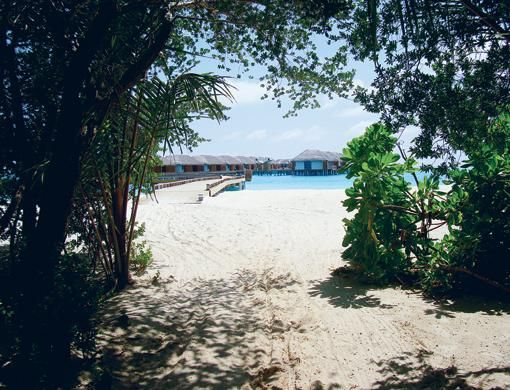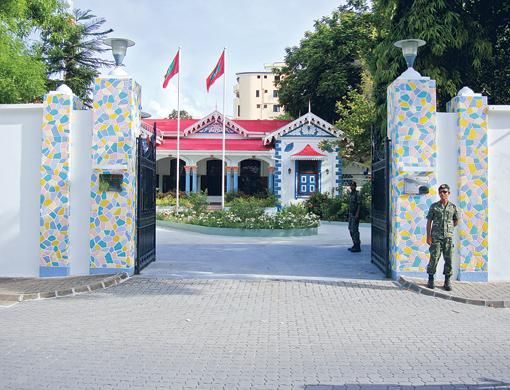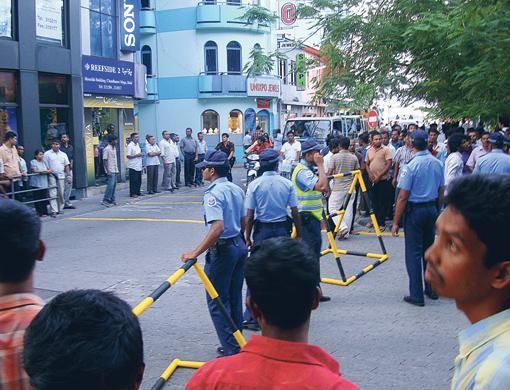The Republic of Maldives sustains itself on tourism. Even as its existence has been threatened by natural and manmade causes, the people have chosen a young leader in whom their hopes for a better life rest.
Its turquoise waters and white sands make it a tourist haven but a closer look at the Republic of Maldives reveals a parallel world where the locals are striving towards political reform, protecting the environment and maintaining their cultural identity.
The beauty of the resort islands of the Maldives makes you forget the stresses of daily life. But visit local islands, the capital Male in particular, and you enter a different world: a world that has its own culture, challenges and achievements. Although it is the smallest Asian country in size and population, the Maldives has developed a political system that promises to usher in much-needed reforms.
According to Mohammad Ali Janahi, a tour guide in Male and a former presidential guard, Maldivians are excited at the prospect of reforms under the recently elected - "humble and young" - President Mohammad 'Anni' Nasheed. "The new president is very different. He walks in the city like an ordinary citizen. He listens to the concerns of the people and has brought press freedom," Janahi said. "[He has] been [the president] for only eight months, so it is still too early to criticise," he added.
Later, while I was taking photographs of the presidential house, a young, energetic man walked towards the building accompanied by two others. He looked like any other ordinary Maldivian but I was told: "This is Mr Mohammad Nasheed, our president."
Violent protests in the Maldives in 2004 and 2005 had led former president Maumoon Abdul Gayoom to initiate some reforms. Political parties were legalised and the democratic process improved. Multi-party, multi-candidate elections were held on October 9, 2008, with five candidates, including a woman, running against Gayoom.
On October 28, 2008, a runoff was held between Gayoom and Nasheed, a former journalist and political prisoner who was a staunch critic of the Gayoom regime, as no clear mandate emerged in the first polls.
Nasheed, with his vice-presidential candidate Dr Mohammad Waheed Hassan, won a 54 per cent majority. He became the first Maldivian president to be elected by a multi-party democracy and Dr Waheed the first elected vice-president. Their election victory ended the 30-year rule of president Gayoom (he was then the longest-serving leader of any Asian nation), which was described by some Maldivians as a tenure with blotches of "corruption". In a speech prior to handing over power to his successor on November 11, 2008, Gayoom said: "I deeply regret any action on my part ... [that may have] led to unfair treatment, difficulty or injustice ... "
On the day I headed to a tourist resort on one of the islands I saw police officers blocking the roads in Male. A local informed me the police were "taking the former president on corruption charges". The Maldivian news agency Miadhu News reported: "After the 30 minutes given to former president Maumoon Abdul Gayoom to present himself at the police headquarters for questioning over his refusal to attend the Presidential Commission formed to probe alleged embezzlement of state funds and resources noted in the reports of the Auditor-General and reports submitted by the public, police arrived at the former president's private residence [Alivaage] and escorted him to police headquarters around 2030 hours." That day Gayoom's supporters, who had gathered before Alivaage to prevent his arrest, clashed with riot police.
President Nasheed now faces the tasks of rebuilding the nation's economy affected by the 2004 tsunami and addressing concerns about the effect of global warming, unemployment, corruption and increasing drug abuse, especially among the youth. Billboards across the country warned about the dangers of drug abuse and a centre for drug rehabilitation stood amid the construction on a newly developing island.
Shama Najeeb, a young sales executive, greeted me at the Velassaru Maldives resort. She had chosen a career in hotel management as that was the only option available in an economy surviving on tourism. Najeeb said she had to pursue higher education in Singapore as Maldives has no university. Male did not present as many opportunities as the resort islands in the Maldives did, she said.
Although more than 99 per cent of the country is water, many Maldivians don't know how to swim. Many have never travelled beyond their local islands.
"Interaction among locals and tourists in the Maldives is discouraged due to clash of cultures. Maldives is a predominantly Muslim country, with certain extremist groups opposed to tourism in the country. Not many Maldivians would allow female family members to work in tourist resort islands because of the negative notions associated with it," she said.
According to Najeeb, not many tourists have a clue about the lives and the culture of the Maldivians. "Maldivians hardly have entertainment venues in the local islands and most of them are not allowed to enter the resort islands. But tourism is an asset for our country," she said.
According to the tourism ministry's records, 318,723 foreign tourists visited the Maldives from January 1 to June 30. This is 10.5 per cent fewer than the number recorded in the same period last year. Statistics reveal tourist arrivals in June dropped by 10.1 per cent from that in June last. The top ten countries from where tourists visited were Italy, United Kingdom, Germany, France, China, Russia, Japan, Switzerland, Austria and Korea.
The Indian Ocean tsunami of 2004 devasted 21 islands in the Maldives, leaving 11,000 people homeless. Many of them continue to be internally displaced persons. A large number of resorts had to be closed after the disaster. However, they were rebuilt at an incredible speed and almost all of them were reopened by the next year.
On November 10, 2008, President Nasheed announced his intention to create a sovereign wealth fund with money earned from tourism that could be used to purchase land elsewhere for the people of the Maldives to relocate, should rising sea levels due to climate change inundate the country. The government is reportedly considering locations in Sri Lanka and India (due to similarities in culture and climate), and Australia.
Global warming and rise in sea levels are of concern to the Maldivians since they have low-lying islands. It is the country with the lowest highest-point in the world at 2.3 metres from the mean sea level.
Erin Lawrence, a marine biologist in Velassaru, says many areas in the Maldives have been affected by global warming. Corals grow at a certain depth and an increase in sea levels affects them, she said. "Now we can spot many corals that have lost their colour. They have turned completely white ... this in return affects marine life since they are all interconnected," she added.
Cluster of atolls
The Maldives is an island country comprising a group of atolls located south of India's Lakshadweep islands between Minicoy Island and the Chagos archipelago, and about 700 kilometres southwest of Sri Lanka in the Laccadive Sea of the Indian Ocean. The 26 atolls of Maldives encompass 1,192 islets, of which 200 are inhabited.





